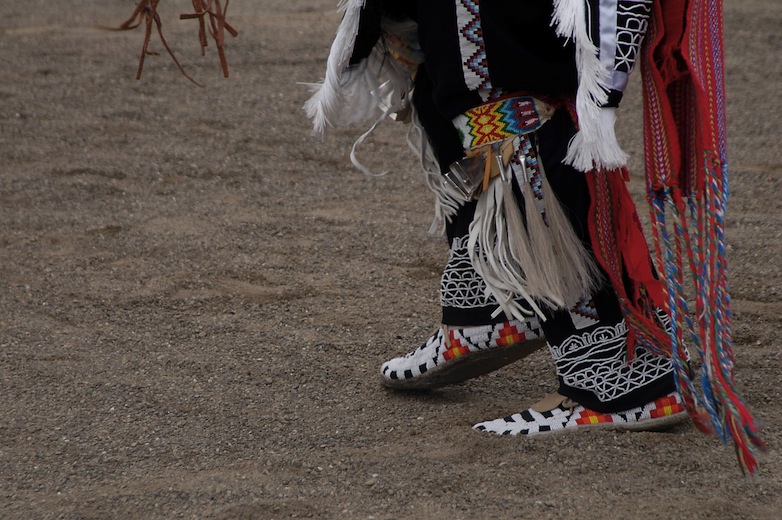It’s easy to forget that within the United States there are sovereign Native American tribes with their own customs, history and languages who retain some degree of official autonomy and self-determination when it comes to their internal governance.
Florida has two federally recognized tribes: the Miccosukee and their more populous cousins, the Seminoles. The Seminoles have about 4,000 members, according to a tribe spokesperson. An official Seminole elder or high-ranking representative was not immediately available for an interview at press time due to the tribe’s ongoing negotiations with the state of Florida regarding casino gaming.
Since 2011, as the number of U.S. states recognizing same-sex marriage hit an all-time high of 37, at least six tribes with almost 1 million members collectively have tribal laws that define marriage as being between a man and a woman. Some tribes explicitly outlaw gay marriage. For example, the Cherokees in Oklahoma and the Navajo Nation, with about 300,000 members each, do not recognize gay unions and show no signs of budging. In 2005, the Navajos voted to ban gay marriage on their 27,000 square-mile reservation that extends into Arizona, New Mexico and Utah. These three are U.S. states where same-sex unions are legal.
Here are just a few federally recognized Native American tribes that have laws either defining marriage as between a man and a woman or explicitly prohibit same-sex marriage:
- The Eastern Band of Cherokee Indians in North Carolina: “The licensing and solemnization of same sex marriages are not allowed within this jurisdiction;”
- The Kalispel Tribe of Indians in Washington: “No marriage license shall be issued or marriage performed unless the persons to be married are of the opposite sex and at least 16 years of age;”
- The Seminole Nation of Oklahoma: “Person of the same gender will not be allowed to marry or divorce;” and
- Oneida Tribe of Indians of Wisconsin: “A marriage may be contracted under this law between two adults who … are of the opposite sex.”
As with the U.S. states, however, opposition to gay marriage varies among tribes. At least 10 tribes, including the Cheyenne and Arapaho Tribes in Oklahoma, the Coquille Indian Tribe in Oregon and the Little Traverse Bay Bands of Odawa Indians in Michigan, have enacted laws since 2009 to recognize same-sex marriage, according to the New York-based advocacy group Freedom to Marry.
The Osage Nation bordering Tulsa, Oklahoma passed a wide-ranging law in 2012 that does not recognize gay marriage. John Hawk Co-Cke’ (co-KAY), a member of the Osage Nation who is gay, said that before reservations were created, many tribes had no problem with men who embraced their feminine side and women who lean toward their masculine side, inspiring the term “two-spirit” people. Two-spirits were sometimes given special ceremonial roles because of their ability to occupy both worlds, he said.
But the spread of Christianity contributed to a change in attitude toward marriage on the reservations, said Co-Cke’. The heterosexual influence of Christianity remains strong in many tribes more than a century after an era of mass conversions.
“It saddens me, but I don’t blame them because they have been forced to give in,” said Co-Cke’, who leads two-spirit retreats in Oklahoma. He respects the Methodist faith he was raised in, but learning about Native American traditions that date back further helped him cope with being gay.
“I started feeling that emptiness. That’s when the old ones started calling me,” he said. “I had to get healthy.”
The Supreme Court will hear arguments April 28 and could decide by June whether gay couples can marry in the remaining states and U.S. territories where it’s not allowed. But while 27 states that allow same-sex marriage got dragged over that threshold by federal judges, the sovereign status of federally recognized tribes means a U.S. high court ruling would not directly affect their laws because these tribes were not parties to the U.S. Constitution.
Many provisions covered by the U.S. Bill of Rights extend to tribal jurisdictions through a separate law, the Indian Civil Rights Act of 1968. Claims made under that law must be heard in tribal courts, which would ultimately decide a challenge to a tribe’s marriage law.
What is interesting is to witness how history has come full circle, with modern civil and human rights reinforcing what was once traditional wisdom about how human sexuality and gender identity exists on more of a behavioral continuum rather than inside some narrowly defined Holy Roman box.
The Associated Press contributed to this column.







